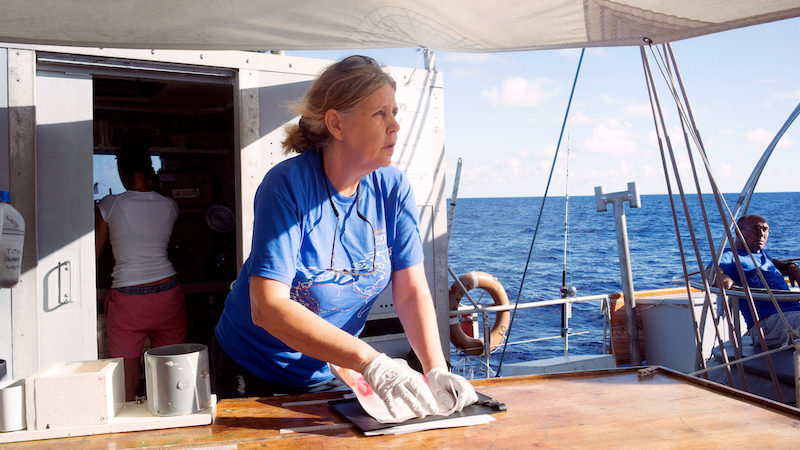
In the middle of the Pacific Ocean, several hundred miles from Hawaii, is a swirling cauldron of waste plastic that's been growing steadily since the mid-1980s. Dubbed the Great Pacific Garbage Patch, it's an ugly testament to the scale of disposable culture - but it's also an active breeding ground for new varieties of single-celled life.
Along with colleagues on board the research schooner Tara, the oceanographer Maria-Luiza Pedrotti of France's National Center for Scientific Research (CNRS) is stalking the mysterious inhabitants of what she calls the "plastisphere." Her goal is to understand what kinds of microbes populate this newly evolved ecosystem and what biological tasks they perform. Beyond that, she wants to learn how they affect the broader ocean food web and - by extension - human health.
Pedrotti's investigation of Great Pacific Garbage Patch microbes is ongoing, but her earlier study of garbage patches in the Mediterranean and elsewhere has already revealed certain distinct qualities of microbes that thrive on waste plastic. The plastic fragments that make up the patches' confetti-like slurry, Pedrotti says, harbor large quantities of bacteria from the genus Vibrio, which includes human pathogens like cholera. Studies elsewhere have suggested other dangers brewing within the plastisphere. Earlier this year, researchers at Germany's Leibniz Institute of Freshwater Ecology and Inland Fisheries and elsewhere reported that bacteria living on microplastics have very high rates of gene exchange, perhaps due to the generous surface area the plastics give microbes to grow on. That rapid gene exchange facilitates the spread of antibiotic resistance, which could eventually affect land-dwellers like us.
Findings like these have alarmed ecologists and infectious-disease experts. But getting rid of ocean garbage patches isn't as simple as deploying cleanup boats, according to Pedrotti. For one thing, we don't yet know how closely the garbage patch microbial system and the larger food web have become intertwined: Eliminating the plastisphere could have unpredictable effects on the ocean ecosystem as a whole. And to some extent, the cleanup question is moot, because it's impossible to remove even a significant fraction of the plastic from the ocean. Much of it is microscopic in size and cannot be captured even by nets with a lace-fine mesh.
But even if we're stuck with plastic garbage patches for the foreseeable future, what we learn from the plastisphere's denizens could help counteract the patches' worst effects. French scientists studying the North Atlantic Garbage Patch found a high concentration of microbes capable of digesting plastics for energy, and Pedrotti's research confirms the presence of such microbes. That means garbage patch dwellers could potentially be harnessed to degrade at least some floating detritus.
Still, the ideal solution would involve stemming the tide of plastic waste permanently, making the plastisphere just a blip on the evolutionary timeline. "I have a dream," said Romain Troublé, executive director of the Tara Expeditions Foundation. "A century from now, geologists will see this plastic layer, when man innovated plastic, and [by] 2050, there is no more."
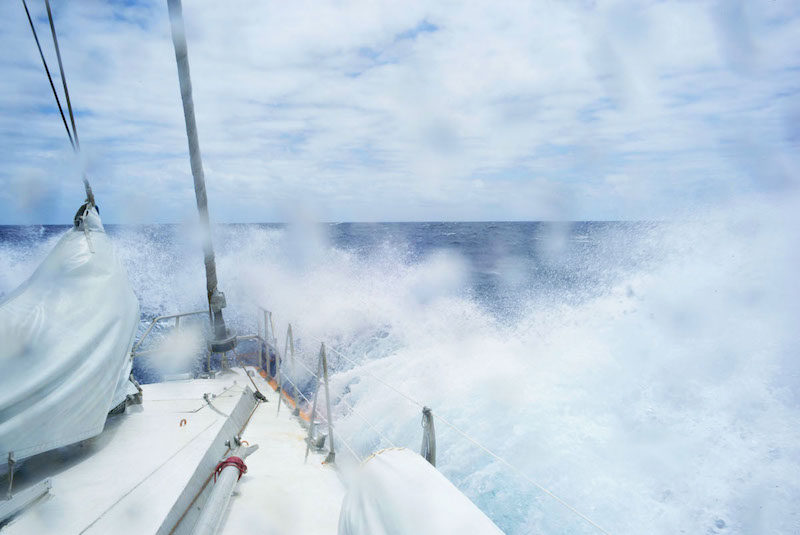
What inspired you to study the microbial communities of ocean plastic garbage patches?
I did my Ph.D. working on the dispersion of larvae from sea urchins. I changed to work in bacterial diversity on aggregates, and in one of my projects, I worked on fibers from waste treatment plants. In 2014, I coordinated an expedition working on plastic. When Romain [Troublé] proposed to me this leg of the Tara Pacific expedition, I said, "Yes, no problem!"
On the Tara, how do you collect samples from the Great Pacific Garbage Patch, and how are these samples analyzed once they arrive back on land?
For this experiment, we collect plastics with a Manta net [a fine-mesh collection device used while the boat is in motion]. We can assess the size class larger than 300 microns. We track at 3 knots because we need very calm conditions.
In the Great Pacific Garbage Patch, we deployed several Mantas. One is for genomic analysis, one is for assessing the spatial distribution of the fragments, and another is to identify all kinds of biodiversity associated with plastic. We deployed up to five Manta nets a day, so we spent all day doing that and sorting plastics. For one throw of the Manta net, a 30-minute throw, we'd find 500 fragments of plastics.
We place the plastics in tubes for genomic sequencing. We sequence 16S and 18S ribosomal RNA [which is essential for protein synthesis] for specific bacteria. We also do metagenomic analysis with Genoscope [the French National Sequencing Center]. It gives us the whole picture - the free communities of microbes and the communities associated with plastic aggregates. Identifying species associated with plastics will make it possible to determine zones of bacterial colonization and to better understand the dispersion of alien, toxic and pathogenic species.
The majority of plastic that we found in the Mediterranean is polyethylene and polypropylene, two major components of packaging. We are also going to scan samples from the Great Pacific Garbage Patchto establish a plastic-to-plankton ratio, like an indicator of the state of the environment. If there is more plastic than plankton, fish will be starved because they eat the plastic instead of the plankton. In this area, the ratio is very, very high. Previous studies found there is about one kilogram of plankton for each six kilograms of plastic.
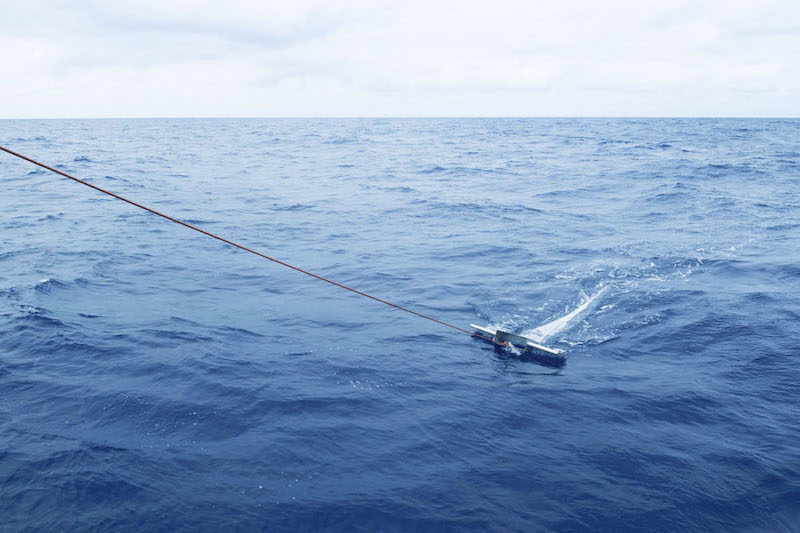
The Great Pacific Garbage Patch is not an island you can clean up with waste boats. It's just a lot of microplastics spread over a very large area, and a very small concentration of plankton. Publications about the Great Garbage Patch have outlined the presence of macroplastics [plastic fragments typically larger than five millimeters], but we found mainly microplastics. We counted some large objects, but not many in relation to the extent of the garbage patch.
When the sample arrives on the boat, we have a lot of microplastics - I cannot give one term [to describe it]. We use "soup," but, you know, it's a poor soup, because there's a lot of plastic and few plankton.
How is the microbial community in ocean garbage patches different from what is found elsewhere in the ocean?
Microbes attached to plastics are a distinct biological community with different physical [and] chemical characteristics from free-living microbes. Microbes really take advantage of being on the surface of plastics - they are very opportunistic. When they have no available substrate, they stay in a dormant state for a long time. But when they find a substrate like plastic, they develop a lot. In the Mediterranean Sea, we found a lot of benthic cyanobacteria on plastics. These cyanobacteria are filamentous and often live in the deep. They have the capability to adapt to very different environments. They can adapt for different concentrations of nutrients because they are able to fix nitrogen.
In the Mediterranean, we also found that the keystone species of bacteria on the plastic specialized in degrading hydrocarbons. Plastic is a polymer, composed of a chain of monomers. What these bacteria do is use the carbon in the monomers [for energy] - this is the way that they reproduce.
In general, the functions of microbial communities [on plastic] will be nitrogen fixation, gene transfer and degrading plastic. In our results, the bacteria attached to plastic are the ones that are able to degrade hydrocarbons.
Pathogenic organisms are also associated with plastic, so we will evaluate the potential of harmful microbial taxa. I worked on a project where my colleagues found the Vibrio gene in the North Atlantic where was associated with microplastics in the North Atlantic. They found Vibrio all the time, a group of bacteria including those that cause cholera. Most marine bacteria are harmless, but several taxa can cause disease in humans and animals.
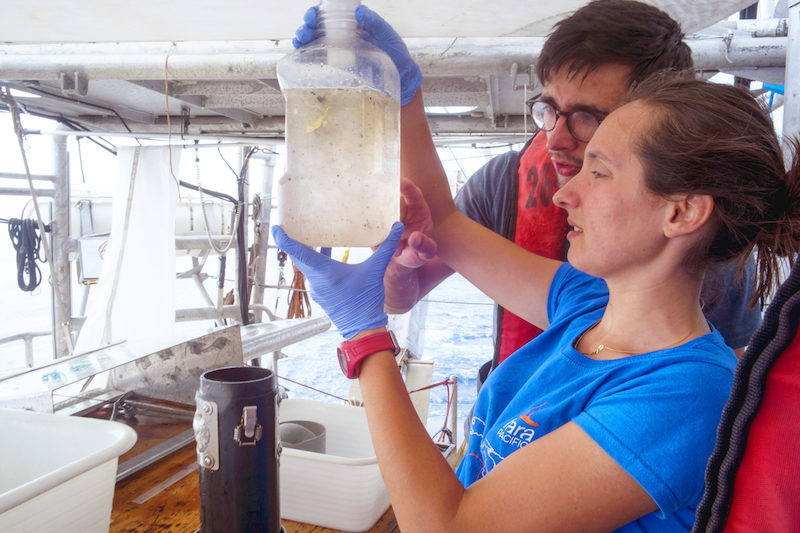
We will compare the Mediterranean system with the Pacific system to see if we have the same kind of microbial attachment [to plastic]. Is it a common mechanism, or is it a specific mechanism for the Mediterranean?
In the Mediterranean, the diversity on plastics is higher than the diversity of free-living bacteria. This is very interesting. How can bacteria use these plastics? Why is the diversity higher? Maybe because bacteria are specialized for some kind of substrates and can use plastics as a substrate. Another colleague, a student, did an experiment that shows us that biofilms start on degraded plastic. It's very difficult to start with new plastic. Microbes need this kind of degraded surface to colonize.
How do microbes in ocean garbage patches interact with the rest of the ocean food chain? Could these changes eventually affect humans?
The plastisphere system harbors toxic microbial species. There is a lot of this plastic in oysters or mussels - if you eat oysters directly, you also eat the stomach. If there are pathogenic [microbes], the transfer is direct when you eat filter feeders.
Another threat is that filter feeders [fish that eat by straining small organisms like krill from seawater] confuse the thin plastic with plankton - if you are a fish, you cannot separate them. With the ingestion of plastic, fish will be starved, and the food chain will be impacted. Everything is connected.
Earlier this year, German researchers reported that bacteria living on microplastics have unusually high gene exchange rates, giving rise to antibiotic resistance. How might this affect the rest of the ecosystem?
They inoculated the plastic - they realized a kind of mutation to adapt microbes to a new environment. It's usually a very long adaptation process, but they show that this can happen very rapidly on plastic, because there are a lot of different groups of bacteria.
This could be harmful for human health. If you are in Bangladesh, for example, and these plastics arrive on the river, you could have an epidemic situation, because the bacteria adapt themselves very fast.
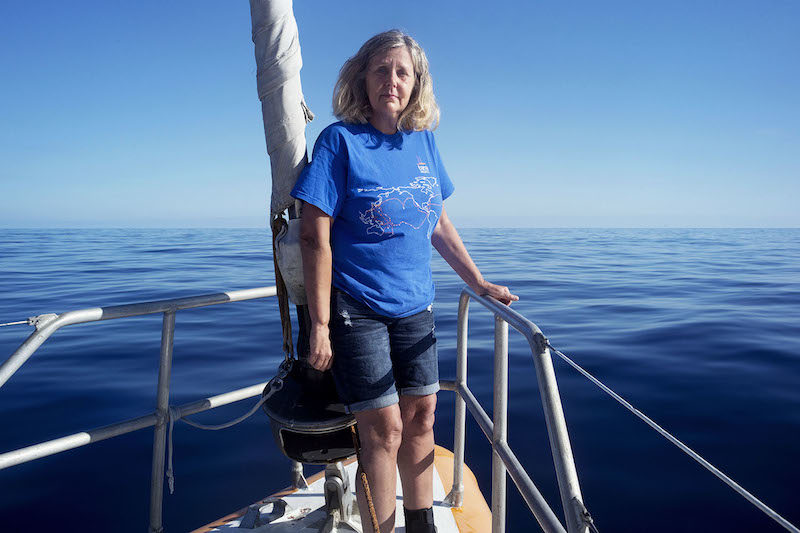
It's not feasible, in my opinion, when you see the extent of the phenomenon. We cannot collect small plastic, like microplastic, and we cannot be efficient in large areas. Even biodegradable plastic is not good for the ocean. Yes, we could ban plastic bags and replace them with biodegradables, but it wouldn't work. If you throw biodegradable plastic into the sea, it may not biodegrade under those conditions, and it can still affect the ocean.
There are no magic devices that can clean the oceans. But cleaning coastal areas, locally, is a very good solution because it helps to remove the plastics before they enter the greater ocean ecosystem.
Even so, some scientists - including your team - think garbage patch microbes can teach us something valuable about how to break down waste.
The idea is that maybe it will be a solution to stop pollution. Bacteria and fungi have the ability to efficiently degrade polyethylene, polypropylene and other polymers. What bacteria do is release enzymes to cut polymers into monomers.
How do you plan to explore the workings of the plastisphere over the next few years?
Plastics can facilitate microbial colonization and be vectors of potential invaders, harmful algae and pathogens in the sea. Understanding that is the first step, but the second is to try to cultivate the organisms that are attached to the plastic.
We need more research. Studies on plastic-associated microbial communities are lacking; we don't understand exactly how these microbes are affecting ocean ecology globally. To be credible, we have to be humble.
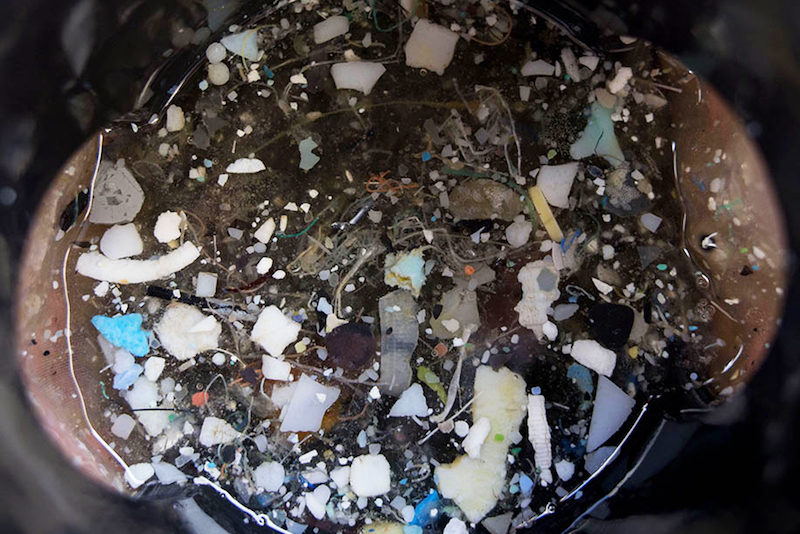



Comment: See also: